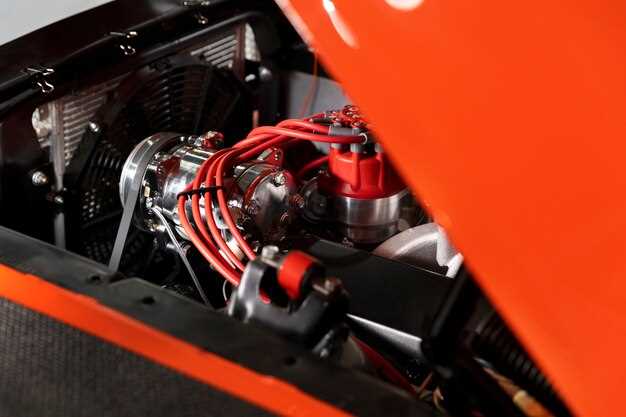
In the world of motorsport, the choice between turbocharged and naturally aspirated (NA) racing engines is a pivotal factor that can significantly influence a vehicle’s performance. Each engine type comes with its own set of advantages and disadvantages, impacting power delivery, throttle response, and overall driving experience. Understanding the distinctions between these two approaches is essential for enthusiasts and racers alike.
Turbocharged engines utilize a turbine-driven forced induction system to compress air entering the engine, allowing for a denser air-fuel mixture. This process increases the potential power output without requiring a larger displacement. On the other hand, naturally aspirated engines rely solely on atmospheric pressure to draw air into the combustion chamber, resulting in a different power band and driving characteristics.
The implementation of turbocharging has gained widespread popularity in modern racing, offering significant boosts in horsepower while often improving fuel efficiency. However, it introduces complexities in tuning and reliability. Conversely, the simplicity and linear power delivery of NA engines cater to drivers who prefer a more traditional feel, but they may find themselves limited by horsepower figures compared to their turbocharged counterparts.
This article delves into the technical intricacies, performance metrics, and the ongoing debate within the racing community regarding turbocharged versus naturally aspirated engines, helping readers gain a clearer perspective on which technology might suit their racing ambitions.
Understanding Performance Characteristics of NA Engines

Naturally aspirated (NA) engines operate without forced induction, relying solely on atmospheric pressure to draw air into the combustion chamber. This inherent characteristic leads to distinctive performance traits compared to their turbocharged counterparts. One of the primary advantages of NA engines is their linear power delivery. As the throttle is opened, the engine responds immediately, providing a direct and immediate acceleration. This responsiveness is particularly favored in racing environments, where precise control and predictability are crucial.
Another important feature of NA engines is their high-revving capability. These engines are engineered to sustain higher RPMs, often producing peak power at elevated engine speeds. This allows for a thrilling driving experience, especially on race tracks where shifting at the optimal point can yield significant performance gains. Additionally, NA engines typically have a simpler mechanical structure since they do not incorporate turbochargers, intercoolers, or related components. This simplicity reduces weight and enhances reliability, making them a popular choice for racing purists.
However, NA engines do have limitations, particularly regarding power output. They often struggle to produce the same level of horsepower that turbocharged engines can achieve at lower RPMs. This means that, while NA engines provide excellent throttle response and high-end power, they may lack the low-end torque that turbo engines can deliver due to forced induction. The trade-off requires careful tuning and gearing to maximize performance in competitive scenarios.
In summary, naturally aspirated engines offer unique performance characteristics centered on immediate responsiveness, high-revving capabilities, and a straightforward design. While they may not match the raw horsepower output of turbo engines, their precise throttle control and reliability make them a favored choice among many racing enthusiasts.
Benefits and Drawbacks of Turbocharging in Racing

Turbocharging offers several advantages for racing engines, primarily through increased power output. Turbo engines can significantly enhance horsepower and torque by compressing air before it enters the combustion chamber. This results in a more efficient fuel-air mixture, allowing for higher performance without the need for larger displacement engines. Additionally, turbocharged engines can provide better fuel efficiency, which is crucial in long races where fuel consumption can determine overall performance.
Moreover, turbocharging allows for greater tuning flexibility. Engineers can adjust boost levels and compressor sizes to optimize engine performance for specific racing conditions, such as track layouts and weather. This adaptability can provide a competitive edge, enabling teams to tailor their engines for maximum effectiveness in various scenarios.
However, turbocharging also comes with its drawbacks. One significant concern is turbo lag, which occurs when there is a delay between pressing the accelerator and experiencing the increased power due to the turbocharger needing time to spool up. This can impact the engine’s responsiveness, particularly in high-stakes racing situations where immediate acceleration is critical.
Durability is another issue; turbocharged engines often operate under higher stress than naturally aspirated (NA) engines. The additional pressure and heat generated can lead to increased wear and the potential for mechanical failure. Teams must invest in high-quality components and systems to mitigate this risk, leading to higher overall costs for maintaining turbo engines.
Finally, regulatory considerations in motorsports may limit the use of turbocharging. Some racing series impose restrictions on boost levels or engine setup, which can diminish the benefits of turbocharging. Teams must navigate these regulations to ensure compliance while still achieving competitive performance.
Choosing the Right Engine Type for Your Racing Needs
When selecting an engine type for racing, it’s essential to evaluate your specific requirements and goals. Turbocharged engines (turbo) and naturally aspirated engines (NA) each have distinct characteristics that can significantly influence performance outcomes.
Turbocharged engines utilize forced induction, which allows for increased air intake and, consequently, more power generation without significantly increasing engine size. This makes them an excellent choice for drivers seeking maximum horsepower and torque, particularly in high-speed racing scenarios. Turbo engines excel in situations where acceleration and top-end power are crucial, providing a competitive edge on the track.
On the other hand, naturally aspirated engines rely on atmospheric pressure to draw air into the combustion chamber. While they may produce less power than their turbocharged counterparts at higher RPMs, NA engines often deliver superior throttle response and are generally lighter, leading to a more balanced weight distribution in the vehicle. For many racing enthusiasts, particularly in classes that emphasize driver skill and vehicle control, NA engines can provide a more engaging and tactile driving experience.
Ultimately, the decision between a turbocharged and a naturally aspirated engine should be based on factors such as race type, track conditions, and personal driving style. Considerations like weight, power delivery, and maintenance are also critical. Evaluate the specific requirements of your racing discipline, whether it be drag racing, circuit racing, or off-road, to determine which engine type will best meet your needs and enhance your overall performance on the track.




